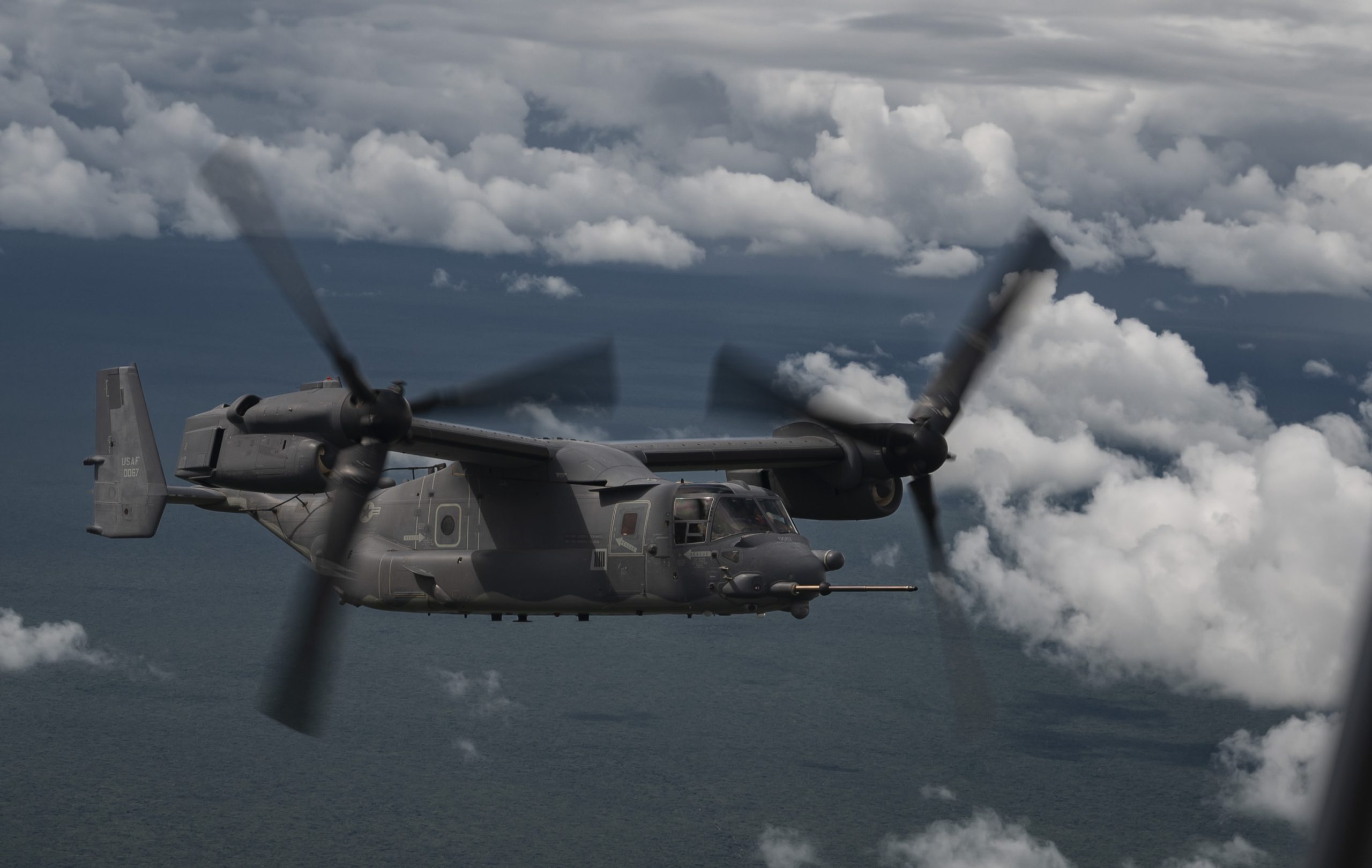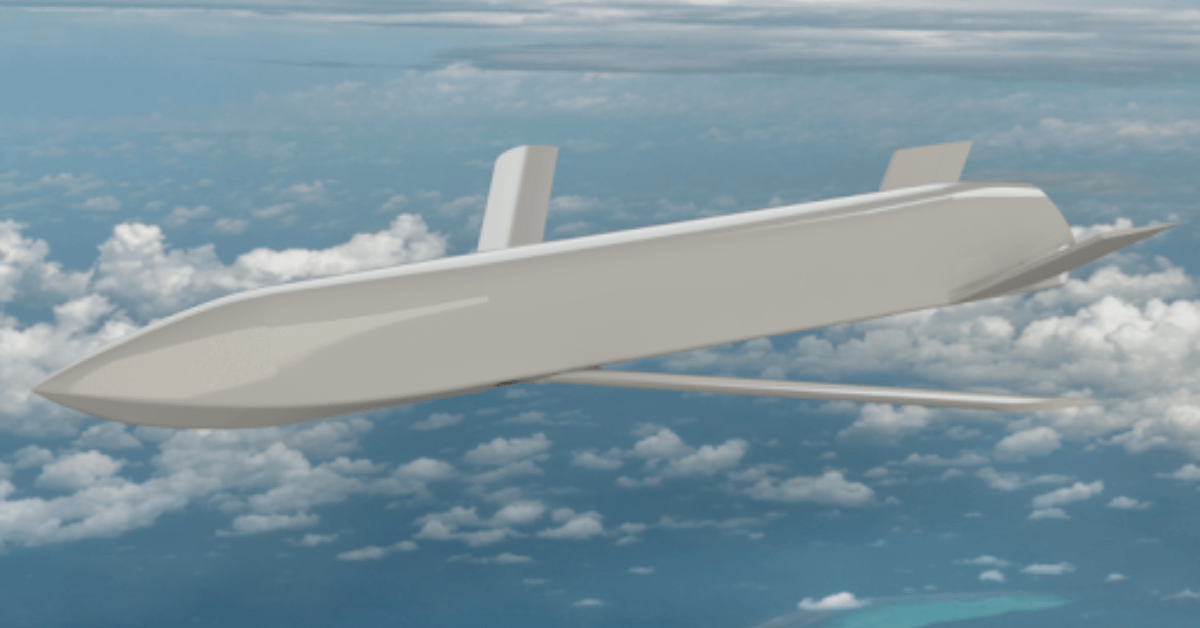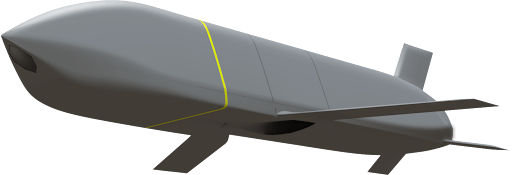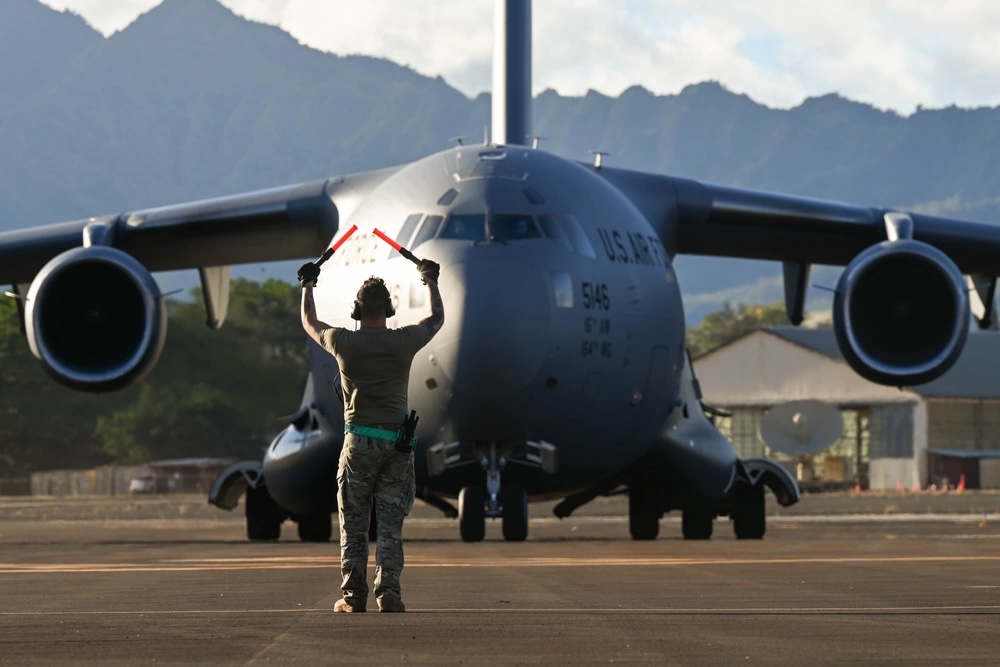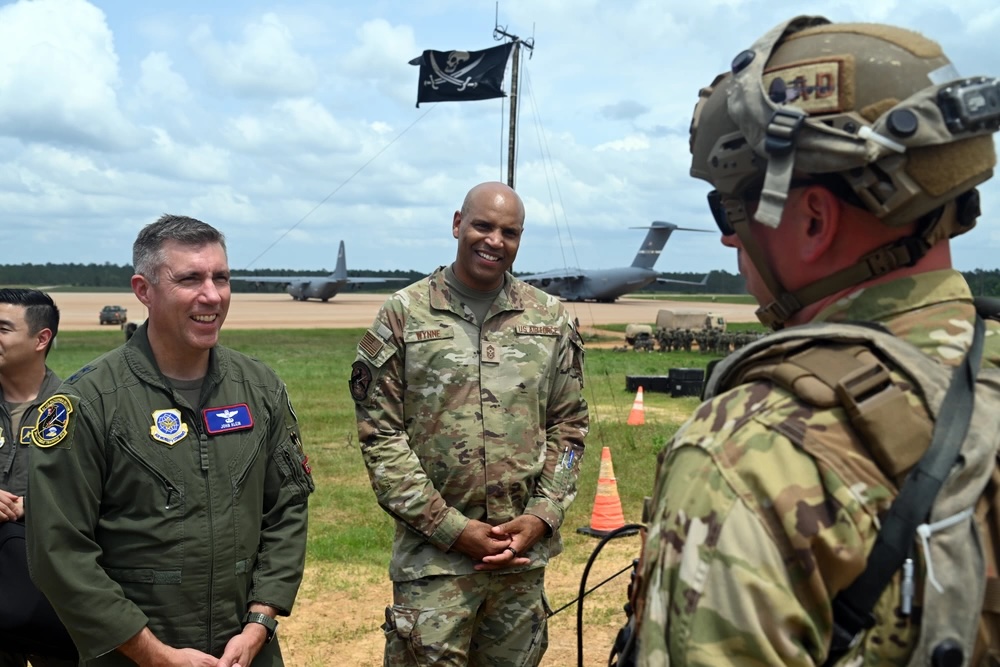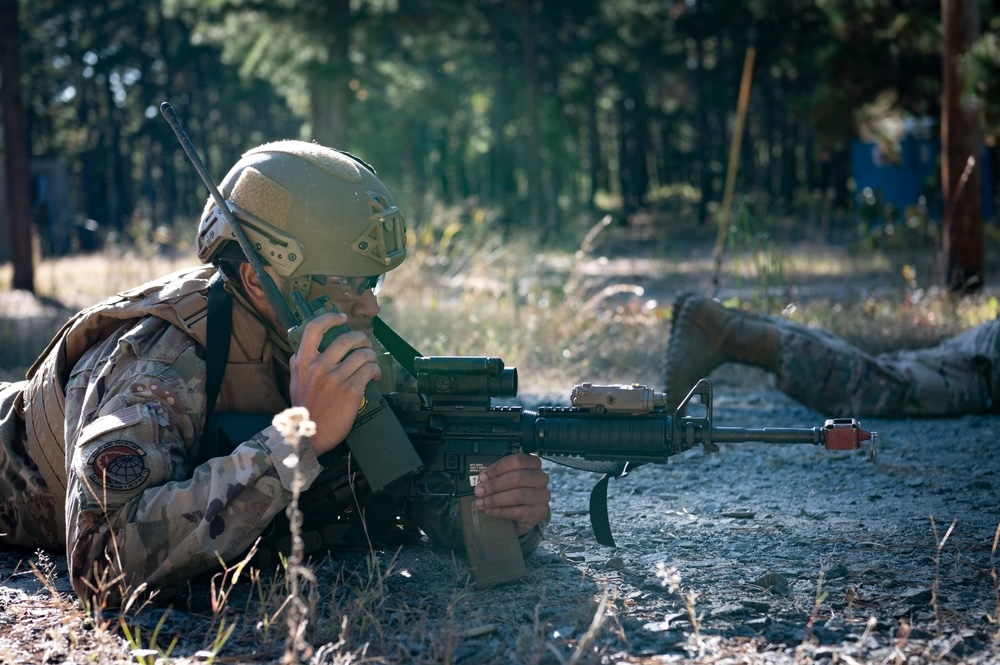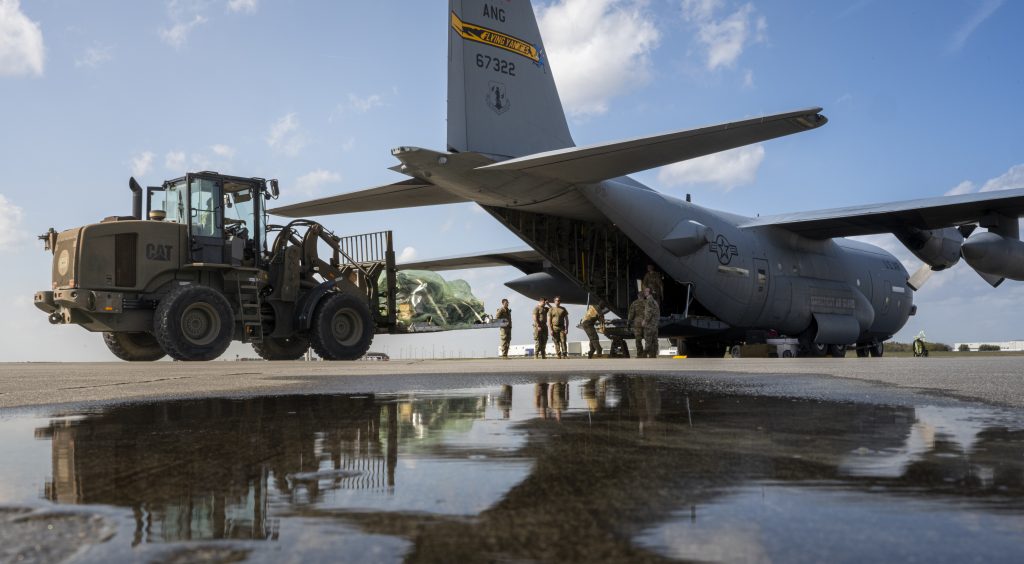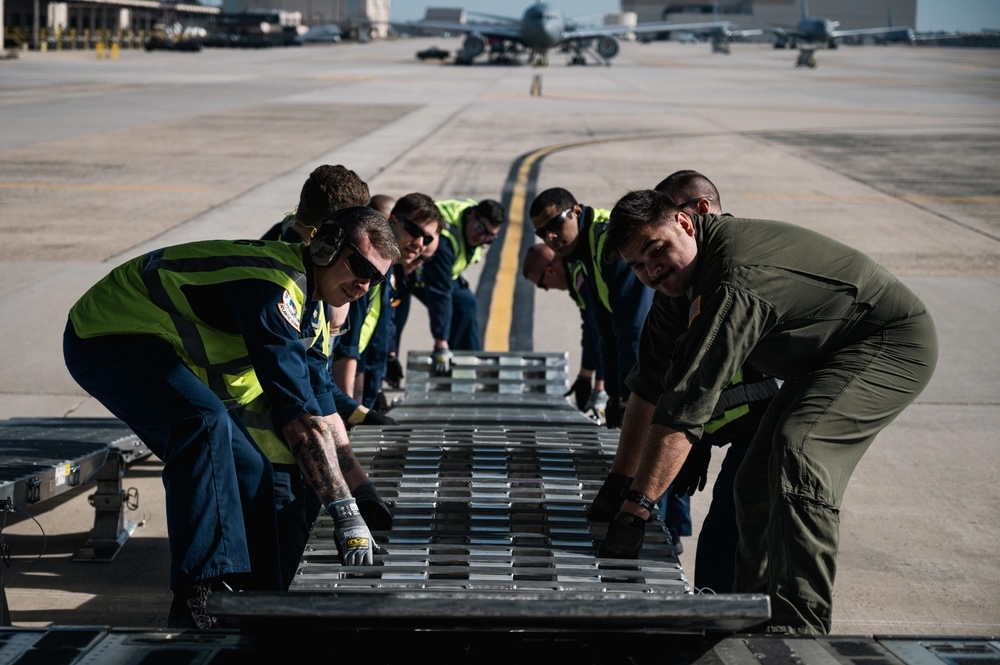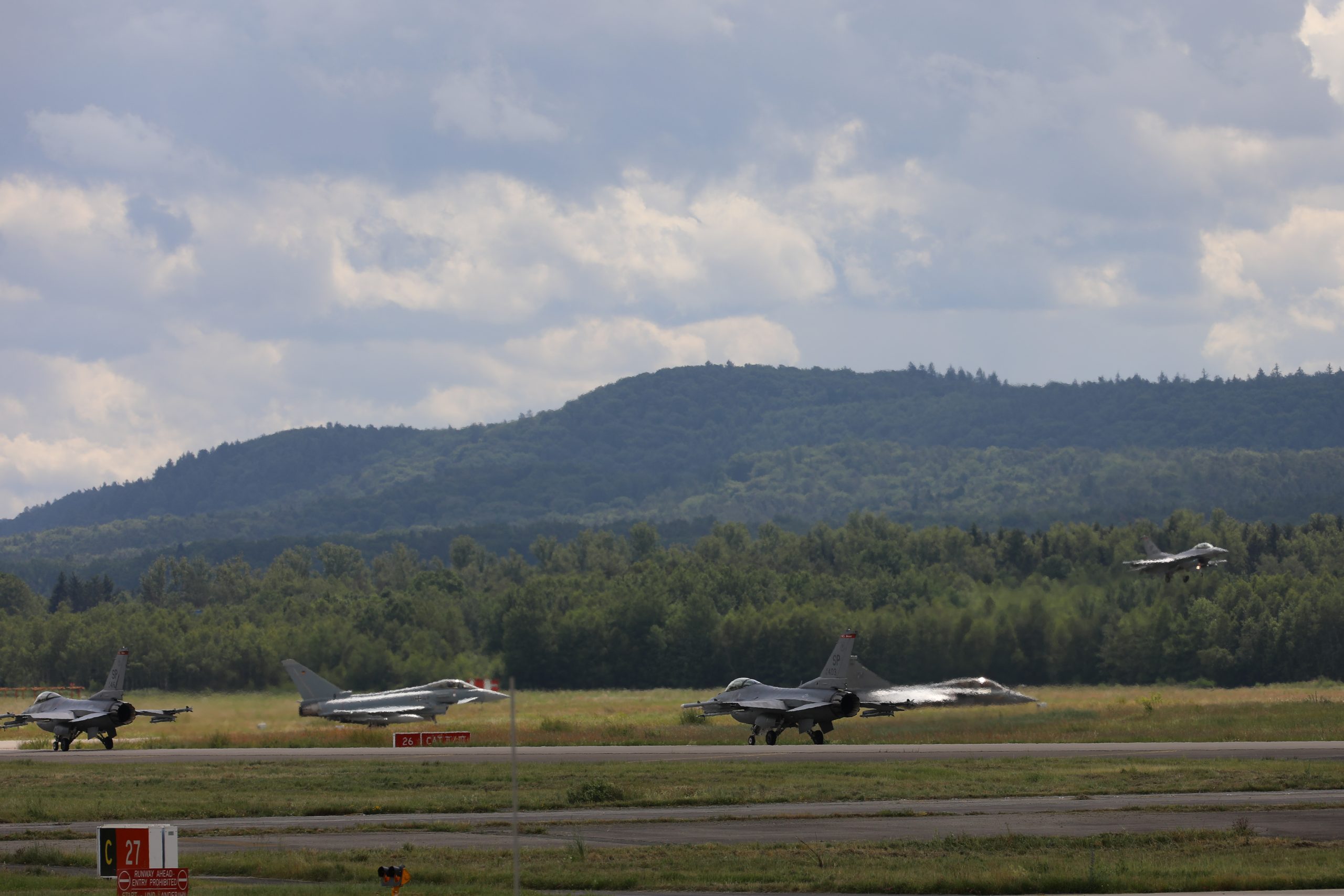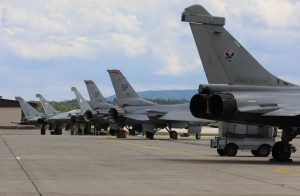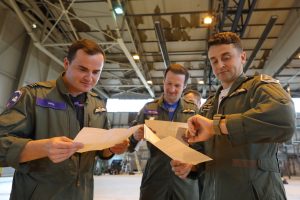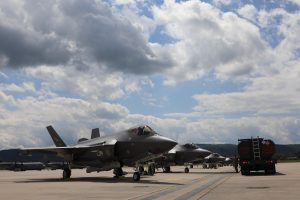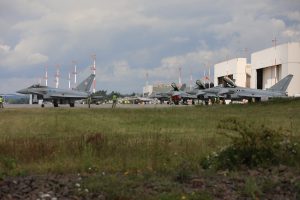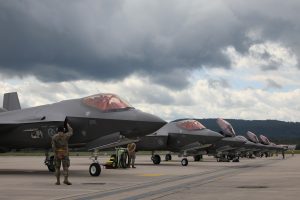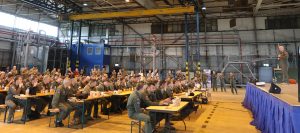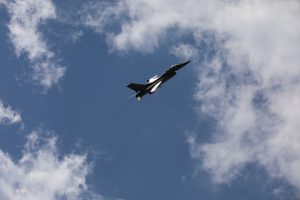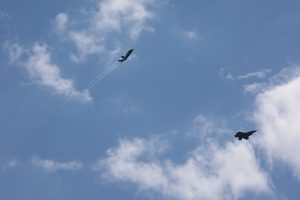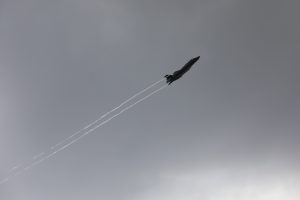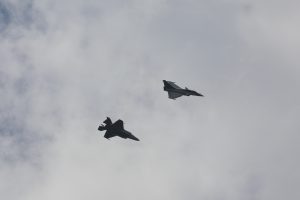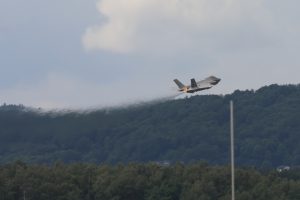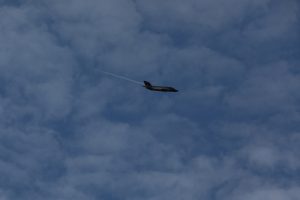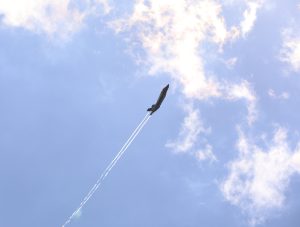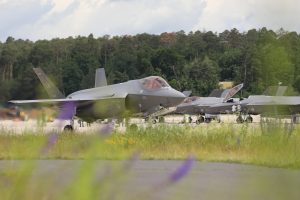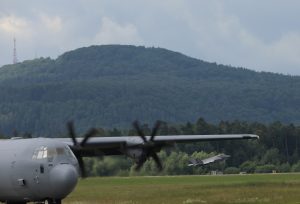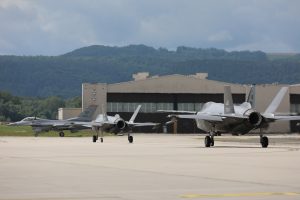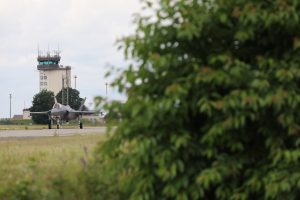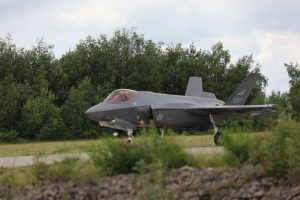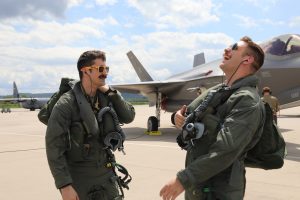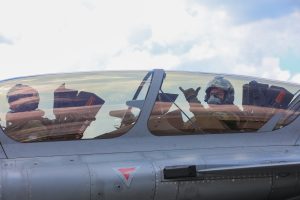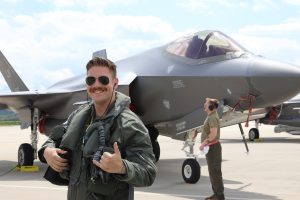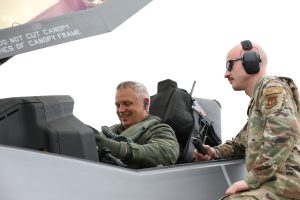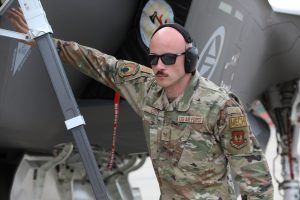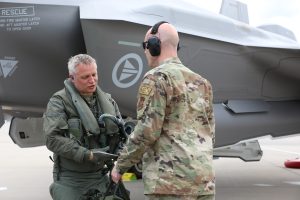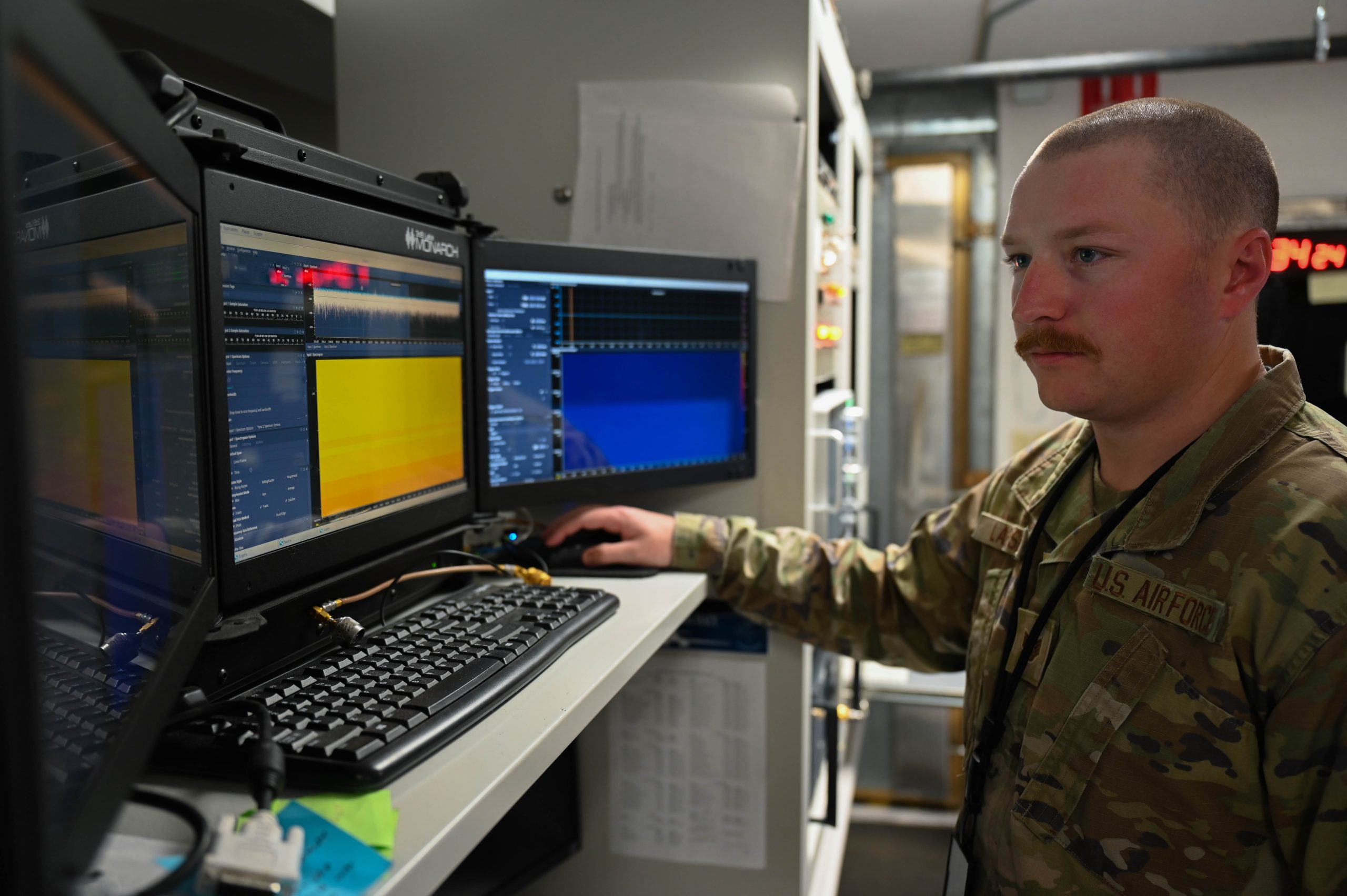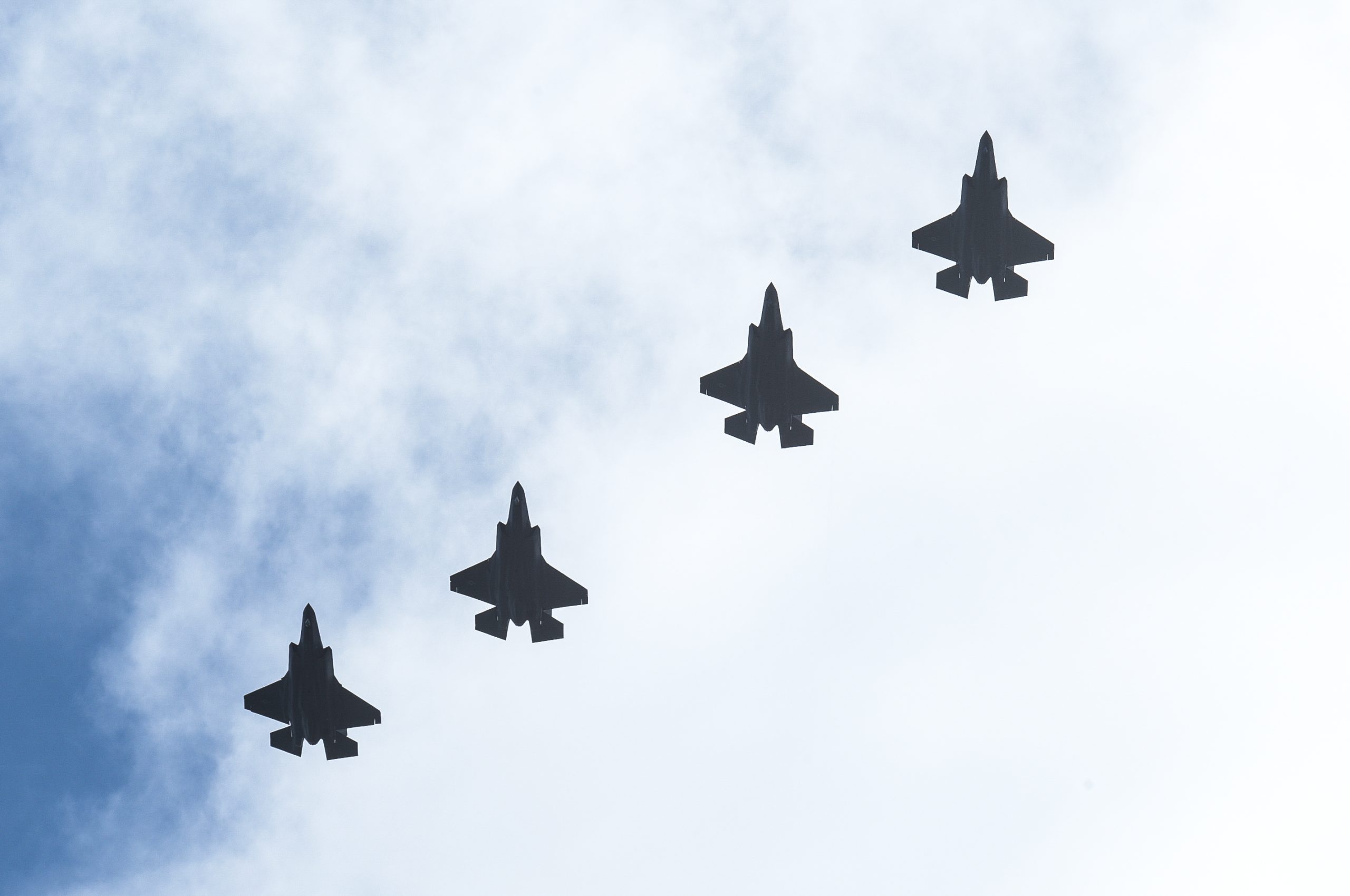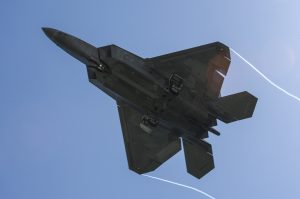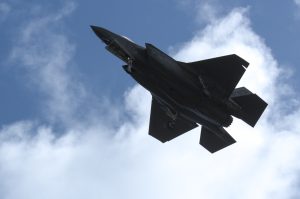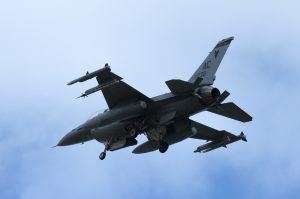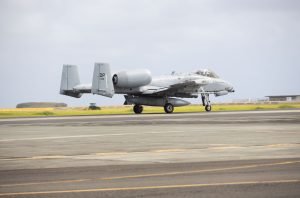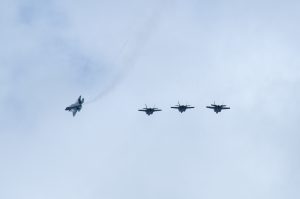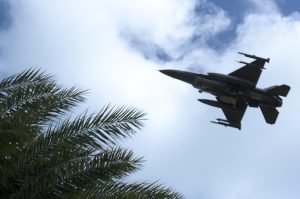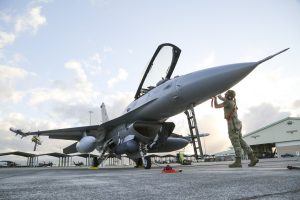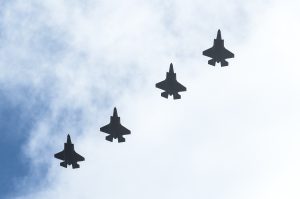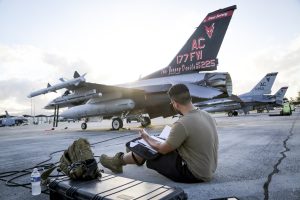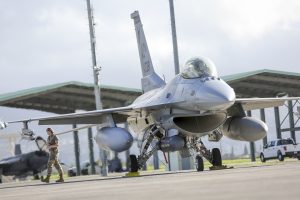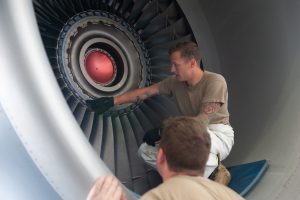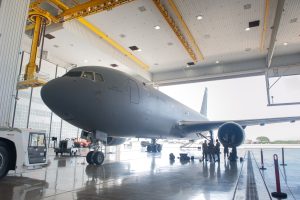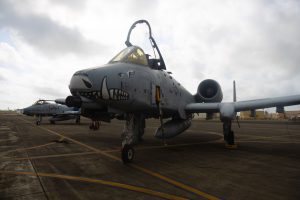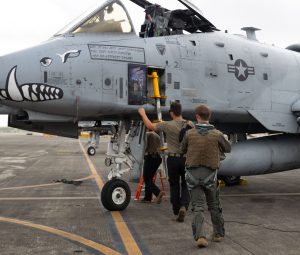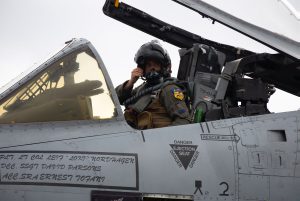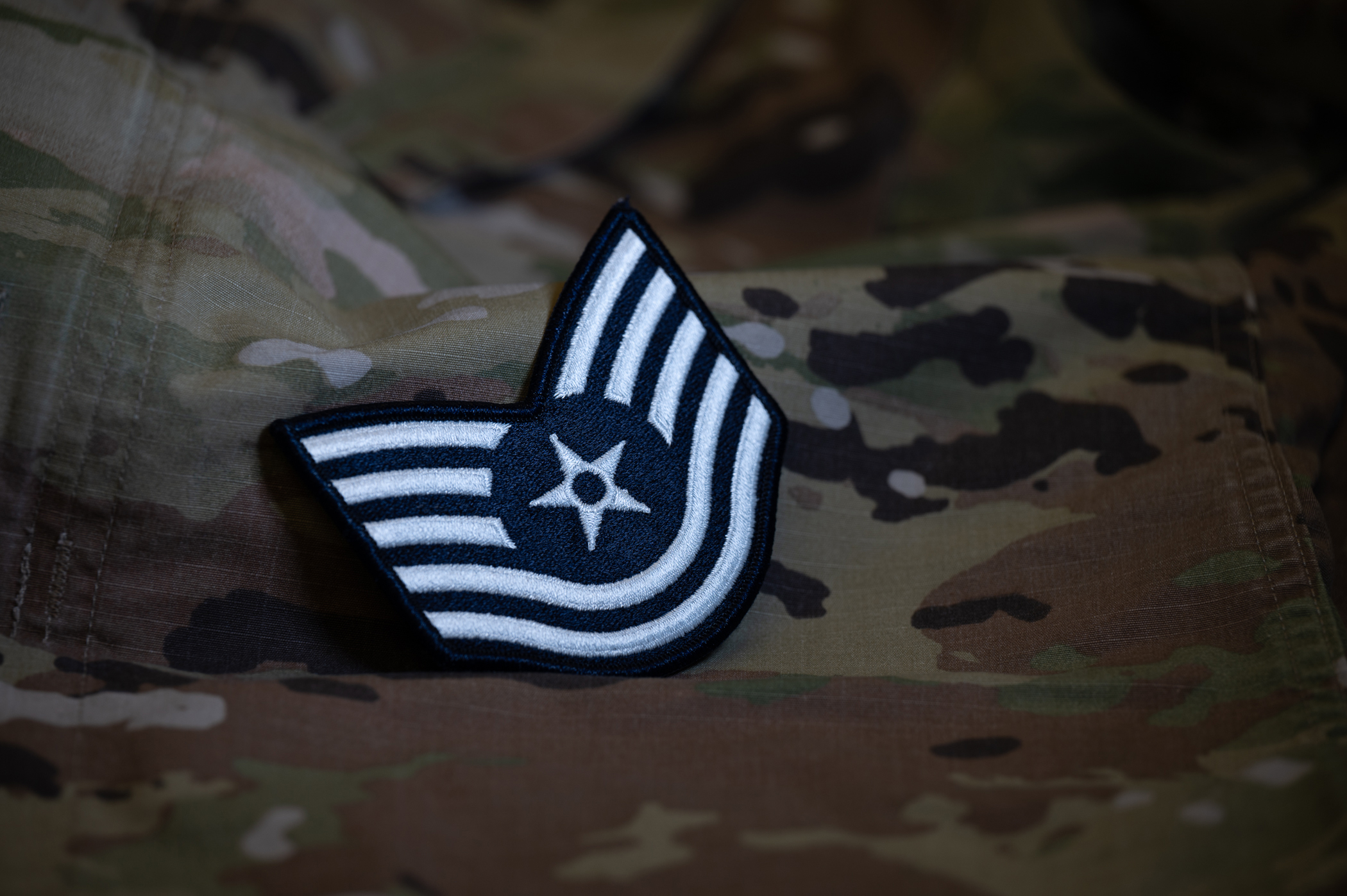The V-22 Osprey fleet will not return to full, unrestricted flight operations until mid-2025, a Pentagon official said, as part of a slow buildup following a deadly crash in November that killed eight Airmen and led to a three-month grounding.
Also around that time the V-22 Joint Program Office plans to start fielding a newly designed clutch for the Osprey, which is flown by the Air Force, Marine Corps, and Navy. Issues with the clutch have been cited in previous mishaps.
Defense Department officials shared the details during a charged hearing before the House Oversight Committee on June 12. Lawmakers sharply criticized the V-22 program and DOD’s lack of transparency regarding the aircraft’s safety data, while families of service members who died flying the Osprey sat in the front row, holding photos of their loved ones.
Scrutiny of the V-22 reached new heights after an Air Force CV-22 went down in November 2023 off the coast of Japan—the fourth deadly Osprey crash in just over two years. All three services grounded their fleets from December 2023 to March 2024 while the Joint Program Office opened a comprehensive review of the program and the House Oversight Committee launched its own investigation.
Air Force Special Operations Command said in February that a part failure, not pilot error, caused the November 2023 crash, though it has declined to identify the part. Vice Adm. Carl Chebi, head of Naval Air Systems Command, also did not identify the part in his testimony, but he did describe it as a “catastrophic materiel failure that we have never seen before in the V-22 program.”
That would rule out the possibility of a hard clutch engagement—a situation in which the clutch slips, causing a fail-safe system to transfer power from one engine to the other, then re-engages, generating enormous spikes in torque. The Air Force previously grounded its fleet of CV-22s after multiple instances of hard clutch engagement, and the issue was blamed for causing one of three deadly Marine Corps crashes since 2022.
Slow Return
When the Pentagon announced it was lifting the grounding order on all V-22s in March, NAVAIR said senior Air Force, Navy, and Marine Corps leaders coordinated to craft “risk mitigation controls to assist with safely returning the V-22 to flight operations.”
It later emerged that one such restriction was limiting the Osprey from flying more than 30 minutes away from a suitable airfield to which it could divert if something went wrong.
By May, the Air Force had cleared only some of its CV-22s to resume flight, part of what officials said would be a phased, “deliberate” approach to include more thorough and frequent maintenance checks and new procedures for air crews to respond to emergency situations.
All those restrictions and new procedures won’t be going away anytime soon, Chebi told lawmakers.
“Today, we are methodically looking at materiel and non-materiel changes that we can make to allow for a full mission set without controls in place,” Chebi said. “I will not certify the V-22 to return to unrestricted flight operations until I’m satisfied that we have sufficiently addressed the issues that may affect the safety of the aircraft. Based on the data that I have today, I’m expecting that this will not occur before mid-2025.”
An AFSOC official told Air & Space Forces Magazine that the command is tracking the same timeline.
Chebi later added that he personally briefed Air Force and Navy air crews on the new safety controls and on what went wrong in the November 2023 crash so that they have trust in the aircraft.
“I’m confident that the controls that are put in place based on the data I have today allow for return to a flight in a restricted flight envelope only,” Chebi said.
Hard Clutch Engagements
The Air Force will eventually release an Accident Investigation Board report detailing what went wrong in the November 2023 crash. Chebi’s statement that a new kind of failure caused the crash indicates that a hard clutch engagement was not the issue, but they remain a concern for the V-22 fleet.
Former AFSOC commander and current Air Force Vice Chief Gen. James C. “Jim” Slife previously said such incidents result in a “kind of a Christmas tree of lights, caution lights, in the cockpit, and some pretty squirrely flight control inputs.”
Over the life of the program, there have been 19 instances of hard clutch engagement, Chebi said. There was a notable rise in such problems starting around 2022, which prompted AFSOC to stand down its fleet and led the Marine Corps and Navy to implement mitigation measures.
Eventually, the services imposed a flight-hour limit on the aircraft’s input quill assemblies. Chebi said the program office determined that the clutch would wear out over time and had a higher susceptibility to slipping after 800 flight hours.
“We have never been able to repeat the failure in test,” Chebi said, but after the flight-hour limit was instituted, the program office has not seen any instances of hard clutch engagement.
“I want to make this point clear though—that has not eliminated the risk,” he added. “We are currently in testing of a follow-on design for the clutch, not only to minimize exposure, but to eliminate this from occurring again.”
Like the return to full flight operations, that new clutch will take time, said Gary Kurtz, program executive officer for the V-22 JPO.
“That clutch testing is expected to start in the next couple of months,” Kurtz said. “And we anticipate that we will have a new design clutch fielding in the mid-2025 timeframe.”
Scrutiny
Since 1991, the Osprey has suffered 10 fatal crashes, killing 57 service members and giving the V-22 an accident-prone reputation. Proponents argue the reputation is unfounded, noting that its safety data is comparable to other aircraft.
Still, the recent rash of mishaps and crashes has put the program under the microscope, to the point that Rep. Stephen Lynch (D-Mass.) urged DOD officials during the hearing to ground the Osprey until the new clutch is ready, rather than risk another fatal accident.
“If another Osprey goes down, we’re done,” said Lynch. “This program is done.”
Other lawmakers were more supportive of keeping the Osprey flying but expressed frustration with the Pentagon for not sharing more safety investigation data with the Oversight Committee. Rep. Robert Garcia (D-Calif.) also pressed officials to explain why the Air Force has a higher mishap rate in the V-22 than the Marines do.
The scrutiny is not likely to fade soon.
“I want to thank the families for being here today. You being here is very important,” said Rep. Glenn Grothman (R-Wisc.). “Because I don’t want to drop this thing today. There were a surprising number of questions that I felt [the witnesses] didn’t have answers to.”
